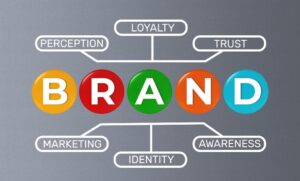Why pricing is so important to the perception of value!
 In the land of commerce, pricing strategy is a delicate balance between attracting customers and maintaining profitability. The decision to lower prices often evokes varied responses—from customer delight to skepticism about product quality or business integrity. Let’s explore the complexities and implications of pricing decisions, emphasizing that while discounts can influence perception, they do not always reflect the true value or quality of a service. Even worse, when you discount your invoice for an adjuster, they tend to take advantage of this – on all future bills. I know of contractors that routinely jack the invoice up with the idea that it’s going to get cut anyway – and so they are forced to regularly cut the price of their bill. That’s a terrible way to do business in the disaster restoration industry!
In the land of commerce, pricing strategy is a delicate balance between attracting customers and maintaining profitability. The decision to lower prices often evokes varied responses—from customer delight to skepticism about product quality or business integrity. Let’s explore the complexities and implications of pricing decisions, emphasizing that while discounts can influence perception, they do not always reflect the true value or quality of a service. Even worse, when you discount your invoice for an adjuster, they tend to take advantage of this – on all future bills. I know of contractors that routinely jack the invoice up with the idea that it’s going to get cut anyway – and so they are forced to regularly cut the price of their bill. That’s a terrible way to do business in the disaster restoration industry!
The Psychology of Pricing
Pricing psychology underscores how consumers perceive value. A high price tag might signal exclusivity or superior quality, while a lower price could imply affordability or a bargain – (even cheap or poor quality). Businesses strategically position their services within this spectrum to appeal to different consumer segments. However, a sudden reduction in prices can challenge these perceptions. Customers may wonder if the initial price was inflated, questioning the product’s intrinsic value or the company’s integrity.
Discounting and Market Perception
Discounting can be a double-edged sword. While it can stimulate sales and attract price-sensitive customers, frequent discounts may erode brand equity and profitability. Consumers might start to expect discounts, undermining the perceived value of the product at its regular price. This phenomenon, known as “discount dilution,” can lead to a race to the bottom where businesses constantly lower prices to compete, potentially harming their long-term viability. Remember a few years ago when car dealers were giving massive, continued discounts? – It ultimately hurt them. People wouldn’t buy a car until the next discount rolled around.
Pricing and Real Value
A product’s (or service’s) price should ideally align with its value in the marketplace – the unique benefits it offers relative to competitors. When prices are slashed, it may imply that the original pricing strategy was flawed or that the product failed to meet sales expectations. This can raise doubts about the product’s quality or the company’s ability to deliver on its promises. Maintaining consistency in pricing reinforces the brand’s credibility and the perceived value of its offerings.
Brand Perception and Credibility
 Perception is crucial in branding. A luxury brand that frequently discounts risks diluting its premium image. Conversely, a budget brand that seldom offers discounts might seem inflexible or out of touch with market realities. Striking a balance involves understanding customer expectations, competitor actions, and the broader economic landscape. Discounts should be strategic, preserving brand equity and reinforcing the product’s value rather than signaling desperation or poor planning.
Perception is crucial in branding. A luxury brand that frequently discounts risks diluting its premium image. Conversely, a budget brand that seldom offers discounts might seem inflexible or out of touch with market realities. Striking a balance involves understanding customer expectations, competitor actions, and the broader economic landscape. Discounts should be strategic, preserving brand equity and reinforcing the product’s value rather than signaling desperation or poor planning.
Strategic Discounting vs. Market Value Perception
Strategic discounting aligns with specific goals, such as clearing excess inventory, attracting new customers, or boosting sales during seasonal lulls. These discounts are planned and communicated effectively to maintain brand integrity. In contrast, reactive discounting—lowering prices due to competitive pressure or sluggish sales—can be perceived as a weakness rather than a savvy business move. It’s essential to differentiate between the two to preserve long-term profitability and customer trust.
Long-Term Implications
The long-term implications of pricing decisions extend beyond immediate sales figures. Consistently undercutting prices to gain market share can create unsustainable expectations among customers. It may also impact employee morale and operational efficiency, as businesses struggle to maintain profitability amid shrinking margins. Conversely, maintaining fair pricing reinforces trust and encourages repeat business, fostering a loyal client base willing to pay for perceived value.
Communicating Value Without Discounts
Effective communication is key to justifying prices without resorting to discounts. Highlighting service features, benefits, and customer testimonials can substantiate the price tag. Emphasizing the quality, craftsmanship, or unique aspects of the product reinforces its value proposition. Additionally, offering superior customer service, warranties, or complementary services can justify premium pricing by enhancing the overall customer experience.
Pricing decisions are pivotal in shaping consumer perceptions and business outcomes. While discounts can temporarily boost sales, they must align with a broader strategy to preserve brand credibility and profitability. Avoiding frequent discounting lessens the risk of devaluing your products or services and maintains consistency in consumer expectations. Ultimately, pricing should reflect the value customers derive from a product or service, nurturing trust and loyalty over time. By understanding the psychological nuances of pricing and prioritizing long-term sustainability, businesses can navigate the complex landscape of consumer perception and market competition effectively.
 By Dick Wagner, Co-Founder The CREST Network, LLC
By Dick Wagner, Co-Founder The CREST Network, LLC
Nationally recognized coach, consultant, trainer, and speaker
Creator of the renowned PREP™ pre-disaster program
Owner of AskDickWagner.com BLOG
Copyright© 2024 AskDickWagner, LLC All Rights Reserved
